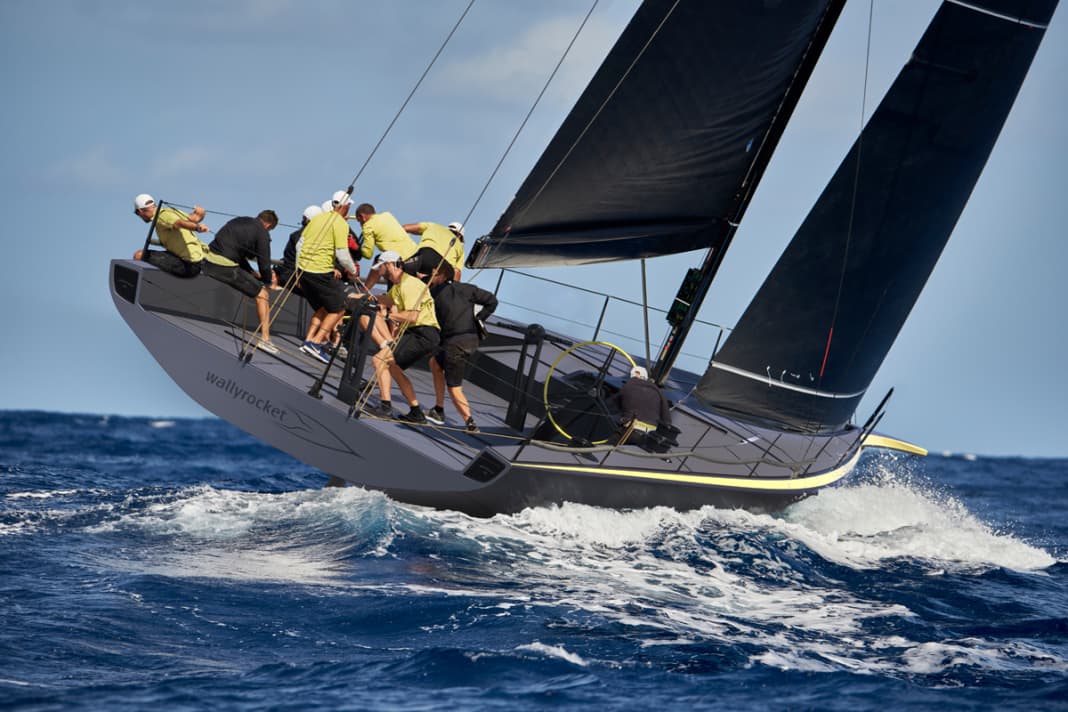





However, the new racer is not only intended to be sailed in the class, but also to give the established elite a run for their money in the ORC and IRC handicap. The co-operation between the Wally design team and the renowned constructors from Botin Partners in Spain also stands for this. Their track record includes various successes in the America's Cup and no fewer than twelve consecutive TP52 season victories as well as successes in the ORC World Championships and the Rolex Maxi Cup.
"The idea behind the Wallyrocket 51 is to create a very strict one-design class that offers pure racing, is high-tech, but can also be competitive under IRC and ORC rules," says Adolfo Carrau, partner at Botin Partners Naval Architecture. An ultra-light construction method is intended to help: The hull is built using a sandwich construction with prepreg carbon and foam core and the structure is cured under heat and pressure in an autoclave. Aramid honeycomb structures (Nomex) are used as the core for the laminate structure of the deck. Boats generally cannot be made any better or stiffer. The rig comes from Southern Spars and is made of high-modulus carbon fibre. The shrouds and stays are also made entirely of carbon or aramid fibres
The Wallyrocket 51 also has a design feature that influenced the designs for the 2007 America's Cup: an adjustable trim tab on the trailing edge of the keel. The flap, which can be electrically adjusted from the cockpit, generates additional lift to windward on an overall shorter profile depth on the keel shaft, thereby reducing drag. According to the designers, the Wallyrocket 51 should be able to sail higher and faster upwind than competitor boats in the TP52 class, despite the comparatively shorter waterline.
Even more power for the Wallyrocket 51: flaps on the keel and water ballast
But that's not all. Water ballast tanks on each side, each with a capacity of 550 litres, are designed to provide an additional performance booster, especially on long or medium distances. The tanks can be completely filled with powerful pumps in just 80 seconds and emptied again in just 60 seconds. When turning, the 550 litres are transferred from one side to the other in just 10 seconds. This is achieved using huge pipes between the tanks and gravity.
The Wallyrocket 51 is sailed on the regatta course with a crew of eleven. However, the layout on deck is designed so that smaller crews can cope with it. The boat is steered via two steering columns and the large winches are operated via two grinders. The huge gennaker with an area of almost 270 square metres is set and recovered through a hatch in the foredeck using a launcher system. Depending on whether the Wallyrocket 51 is to be used for long or short trips, it can be fitted with a minimal interior below deck.
The first Wallyrocket 51 is apparently already under construction and should be in the water next year. However, it has not yet been possible to find out how much the boat will cost. It is unlikely to be a bargain.
Technical data Wallyrocket 51
- Designer: Wally Design Team/Botin Partners Naval Architecture
- Hull length: 15.50 m
- Length waterline: 14.68 m
- Width 4.32 m
- Weight (light displacement): 6,250 kg
- Draft fixed keel: 3.50 m
- Water ballast tanks: 2x 550 litres
- Mainsail: 97.0 m²
- Genoa (103%): 66.9 m2²
- Gennaker: 264.0 m²
- Crew weight: 935 kg (crew of 11)
